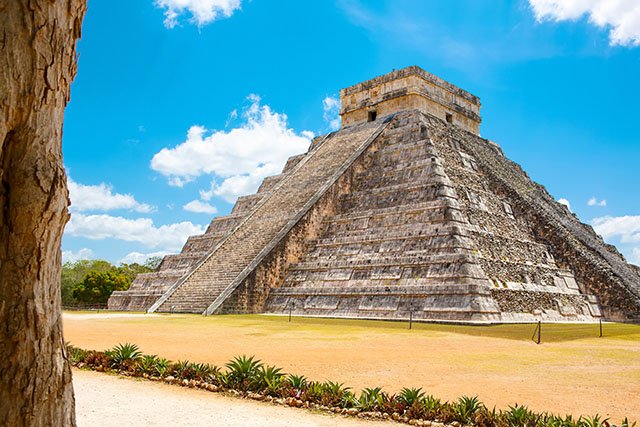Malaysia is a Southeast Asian country known for its diverse culture, stunning natural landscapes, delicious food, and modern cities. Here are some of the best places to visit in Malaysia.
1. Kuala Lumpur: The Heart of Malaysia

Kuala Lumpur, the capital city of Malaysia, stands as a beacon of cultural diversity and modern advancement. At the center of this vibrant metropolis are the world-renowned Petronas Twin Towers. These iconic towers, once the tallest buildings in the world, provide breathtaking panoramic views of the city from their observation deck and skybridge, making them a must-visit for any traveler.
Just a short drive from the heart of the city lies the historic Batu Caves. This complex of limestone caves houses temples and Hindu shrines, attracting both pilgrims and tourists. Dominated by a towering golden statue of Lord Murugan, the Batu Caves offer an intriguing blend of spirituality and natural beauty, with the main cavern reached by ascending 272 steps.
Another historical landmark is Merdeka Square. Known as Dataran Merdeka in the local language, this site holds great significance as the place where Malaysia declared its independence. Surrounded by colonial-era buildings and the impressive Sultan Abdul Samad Building, Merdeka Square provides a glance into Malaysia’s revolutionary past and architectural prowess.
However, Kuala Lumpur is not just about landmarks. Its street food scene is a culinary adventure, epitomizing the city’s multicultural heritage. From hawker stalls to night markets, visitors can indulge in an array of flavors including spicy satays, rich laksa, and fragrant nasi lemak. Jalan Alor, a bustling food street in the Bukit Bintang area, particularly offers a foodie haven with an eclectic mix of dishes.
The bustling markets of Kuala Lumpur further add to its charm, with Petaling Street in Chinatown being especially famous. Here, one can shop for souvenirs, textiles, and antiques, all while soaking in the vibrant atmosphere of this bustling enclave. Kuala Lumpur perfectly embodies a blend of modernity and traditional influences, showcasing a dynamic cityscape where skyscrapers rise above bustling streets and cultural heritage sites.
2. Penang: Where Art and Food Come Alive

Penang, an island state off the northwest coast of Malaysia, stands as a colorful tapestry that binds together art, cuisine, and history. Known as the “Pearl of the Orient,” Penang offers an array of experiences that captivate both the mind and the senses. At the heart of Penang lies George Town, a UNESCO World Heritage Site renowned for its beautifully preserved colonial architecture. The streets of George Town are an open-air gallery where vibrant street art adorns the buildings, telling stories that echo the island’s multifaceted heritage.
For culinary enthusiasts, Penang is often hailed as a food paradise. The variety of dishes available at its renowned hawker centers is a testament to the island’s multicultural influences. Visitors can indulge in Char Kway Teow, a savory stir-fried noodle dish, or taste the Penang Assam Laksa, a tangy and spicy fish-based noodle soup that tantalizes the palate. Each bite not only satisfies hunger but also offers insights into the local way of life and heritage.
3. Malacca: A Glimpse into Malaysia’s Colonial Past
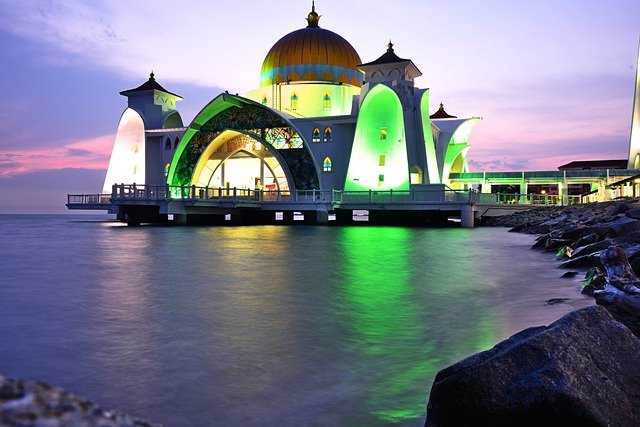
Situated on the west coast of Malaysia, Malacca stands as a testament to the nation’s rich colonial history. The city boasts a well-preserved collection of colonial architecture, each structure narrating stories from Malacca’s past under Portuguese, Dutch, and British rule. Among these architectural marvels, the iconic A Famosa fortress and St. Paul’s Church offer a profound insight into the city’s historical significance.
Walking through Malacca’s streets, one cannot miss the vibrancy of Jonker Street. Often teeming with locals and tourists alike, Jonker Street is the heart of Malacca’s cultural and commercial activities. From antique shops to local eateries, the street is a bustling corridor of tradition and modernity. It is particularly famous for its night market, where a diverse array of foods and trinkets awaits adventurous explorers.
Food enthusiasts will find Malacca a culinary haven, with the city’s signature dish, chicken rice balls, being a must-try. This unique variation of traditional chicken rice, formed into small balls, reflects the creative local cuisine influenced by Chinese culinary traditions. The dish is a testament to Malacca’s multicultural fabric, interweaving Malay, Chinese, Indian, and Eurasian flavors into its culinary landscape.
The multicultural essence of Malacca is also vividly reflected in its landmarks. The Cheng Hoon Teng Temple, the oldest functioning Chinese temple in Malaysia, and the Kampung Kling Mosque, showcasing a blend of Sumatran, Chinese, and Western architectural elements, exemplify the city’s diverse cultural heritage. Each landmark, with its distinct style, preserves the historical and cultural intersections that define Malacca’s identity.
In essence, Malacca serves as a bridge between Malaysia’s storied past and its dynamic present. Whether you’re a history buff, a food lover, or simply in search of a unique travel experience, Malacca offers a rich tapestry of sights and experiences that encapsulate the essence of Malaysia’s colonial history and multicultural charm.
4. Langkawi: The Jewel of Kedah
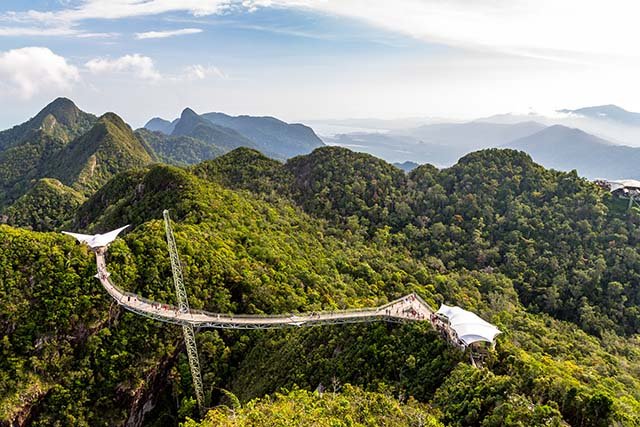
Langkawi, an archipelago composed of 99 islands in the Andaman Sea, is often revered as the Jewel of Kedah. It is a destination that harmoniously blends pristine beaches, lush mangroves, and awe-inspiring landscapes. This idyllic locale offers visitors an array of activities, catering to both thrill-seekers and those in search of tranquility.
One of the most popular attractions in Langkawi is the Langkawi Sky Bridge. Suspended 700 meters above sea level, this curved pedestrian bridge offers panoramic views of the surrounding rainforests, islands, and the Andaman Sea. It is a testament to modern engineering amidst nature’s beauty, making it an unmissable experience for visitors.
Langkawi’s beaches are a major draw for tourists. From the vibrant Pantai Cenang with its bustling nightlife and water sports to the serene Tanjung Rhu, characterized by powdery white sands and crystal-clear waters, there is a beach to suit every preference. Visitors can indulge in activities such as swimming, sunbathing, and beachcombing. Island hopping tours are also highly recommended, providing a chance to explore lesser-known islands, each with its unique charm.
For those captivated by marine life, Langkawi offers excellent snorkeling and diving opportunities. The Pulau Payar Marine Park, located just off the coast, is renowned for its vibrant coral reefs and a diverse array of fish species. Whether you are a novice or an experienced diver, the underwater world here is bound to leave a lasting impression.
Beyond its beaches, Langkawi is rich in natural wonders. The island’s mangrove forests can be explored through guided tours, providing insights into the complex ecosystems and the wildlife it supports. The Kilim Karst Geoforest Park, a UNESCO-recognized site, is another must-visit, known for its dramatic limestone formations and diverse flora and fauna.
In essence, Langkawi is a microcosm of Malaysia’s natural beauty and cultural richness. Whether it’s the thrilling heights of the Langkawi Sky Bridge, the serene beaches, or the vibrant underwater life, Langkawi offers an unforgettable experience for every traveler.
5. Cameron Highlands: Tea Plantations and Cool Retreats
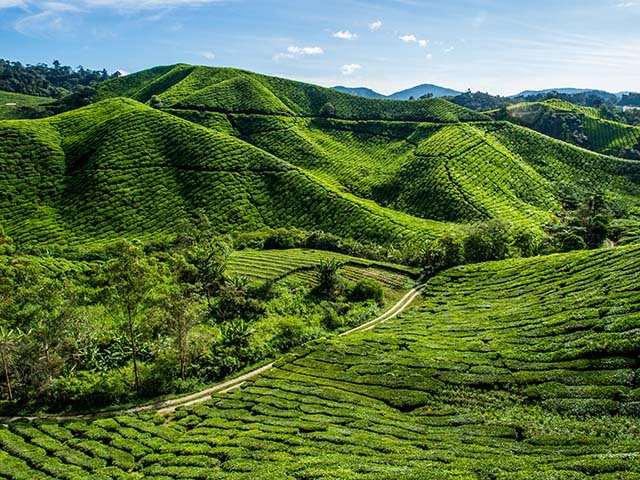
Located in the state of Pahang, Cameron Highlands stands as one of Malaysia’s most enchanting retreats. Famous for its sprawling tea plantations, this highland resort area offers a refreshing escape from Malaysia’s typically tropical climate. Perched at an elevation of about 1,500 meters, the region boasts a cool, temperate atmosphere year-round, making it an ideal destination for those seeking respite from the heat.
The extensive tea plantations are undoubtedly the star attraction in Cameron Highlands. The undulating sea of green creates a postcard-perfect landscape that seemingly extends to the horizon. Visitors are drawn to these verdant fields not just for the visual beauty but also for the opportunity to learn about tea cultivation and processing. Many tea estates, such as the well-known BOH Tea Plantation, offer guided tours where visitors can observe the intricacies of tea production and sample freshly brewed tea against a backdrop of stunning scenery.
Complementing the tea estates are the region’s picturesque hiking trails, which cater to both leisurely walkers and avid hikers. Trails such as the Mossy Forest and the Cameron Valley Tea Pathway offer a chance to explore unique ecosystems and relish the natural beauty of the highlands. With misty trails winding through lush greenery, encountering rare flora and fauna becomes a serene adventure.
Cameron Highlands is also renowned for its vibrant vegetable and flower markets. Local farms produce a bounty of fresh produce, strawberries being particularly popular, and colorful blooms that add splashes of color to the landscape. Visitors can enjoy picking their own strawberries or simply meander through the lively markets, sampling local delicacies and purchasing fresh goods.
6. Kota Kinabalu: Gateway to Sabah’s Natural Beauty
Kota Kinabalu, the capital city of Sabah, is a vibrant and captivating destination that offers a blend of modernity and natural wonders. Situated on the island of Borneo, this city serves as a gateway to some of Malaysia’s most stunning landscapes and biodiversity. Its bustling markets, fresh seafood, and cultural heritage make it a must-visit location for any traveler.
The city’s proximity to incredible natural attractions sets it apart. One of the most notable destinations is the Tunku Abdul Rahman Marine Park. This marine park, named after Malaysia’s first Prime Minister, comprises a cluster of islands known for their crystal-clear waters, coral reefs, and thriving marine life. Visitors can indulge in activities such as snorkeling, diving, and island-hopping, experiencing the underwater beauty and scenic views.
Mount Kinabalu, one of Southeast Asia’s highest peaks, is another major highlight. Standing tall at 4,095 meters, it attracts hikers and nature enthusiasts from around the globe. The journey to the summit is both challenging and rewarding, offering a diverse range of flora and fauna unique to the region. Climbers are often captivated by the breathtaking sunrise viewed from the peak, a testament to Sabah’s natural splendor.
Moreover, Kota Kinabalu’s local culture and cuisine are equally appealing. The city is well-known for its fresh seafood, often served in its numerous waterfront restaurants and night markets. These markets not only provide a taste of the local delicacies but also a glimpse into the daily life and traditions of the Sabahans. From grilled fish and shellfish to traditional dishes like Hinava, the culinary experiences here are both diverse and delicious.
Kota Kinabalu’s charm lies in its harmonious blend of urban development and natural beauty. Whether you’re a nature lover, an adventure seeker, or a culinary enthusiast, the city offers a rich tapestry of experiences that highlight the unique allure of Sabah.
7. Kinabalu Park: A UNESCO World Heritage Treasure

Kinabalu Park, a distinguished UNESCO World Heritage site, is nestled in the heart of Sabah, Malaysia. Renowned for its biodiversity, the park is home to the towering Mount Kinabalu, standing at 4,095 meters above sea level. This impressive peak is a significant draw for hiking enthusiasts, offering several trails that vary in difficulty, providing both casual walkers and avid trekkers with an exhilarating journey. The summit of Mount Kinabalu offers a panoramic view that makes the challenging climb well worth the effort.
In addition to Mount Kinabalu, the park boasts the invigorating Poring Hot Springs, offering a perfect respite for weary travelers. These natural hot springs are not only therapeutic but also embued with a rich mineral content, which visitors believe to have healing properties. Surrounding the hot springs are a series of well-maintained walking trails and a canopy walkway, giving visitors a unique perspective of the rainforest’s elevated habitat.
The Kinabalu Botanical Garden is another gem within the park, renowned for its spectacular variety of flora. The garden is a living museum of plant diversity, showcasing hundreds of species, many of which are endemic to the region. Among the most notable are the rare Rafflesia, the world’s largest flower, and various species of orchids that flourish in this ideal environment. Guided tours are available for those interested in learning about the intricate relationships within this ecosystem.
For those who appreciate more than just the sights, Kinabalu Park provides an immersive experience into the natural splendor of Malaysia. It stands as a testament to the country’s commitment to wildlife conservation and serves as a sanctuary for numerous plant and animal species. Visitors leave Kinabalu Park not only having experienced its natural beauty but also with a deeper respect for the delicate balance of nature preserved in this UNESCO World Heritage site.
8. Johor Bahru: Shopping, Theme Parks, and More

Johor Bahru, the capital city of Johor, is a vibrant gateway situated at the southernmost point of Peninsular Malaysia. This bustling city is renowned for its dynamic blend of modern attractions and rich cultural heritage, making it a prime destination for a diverse range of visitors. Its strategic location, just across the causeway from Singapore, further enhances its appeal as a bustling metropolitan area.
For shopping enthusiasts, Johor Bahru is a paradise. The city boasts numerous retail complexes, including the sprawling Johor Bahru City Square and the popular KSL City Mall. These shopping centers not only offer a wide array of international and local brands but also feature a variety of entertainment options such as cinemas and food courts, catering to all ages and tastes.
An undeniable highlight of Johor Bahru is the Legoland Malaysia Resort, a premier theme park that is a must-visit for families and thrill-seekers alike. The park features over 70 rides, slides, shows, and attractions across its thematic areas, including a water park and a hotel designed to offer a fully immersive experience. Nearby, the Sanrio Hello Kitty Town adds to the excitement with its charming attractions, particularly captivating for younger visitors.
Beyond the modern amenities, Johor Bahru is also steeped in cultural significance. Historical sites like the Sultan Abu Bakar State Mosque, with its Victorian-Moorish architecture, and the Arulmigu Sri Rajakaliamman Glass Temple, one of the most unique Hindu temples made predominantly of glass, reflect the city’s rich cultural diversity. The Johor Bahru Old Chinese Temple stands as a testament to the city’s deep-rooted community heritage and offers a tranquil escape amidst the urban rush.
The city’s close proximity to Singapore makes it an excellent base from which to explore the vibrant island while enjoying more affordable accommodations and amenities. In summary, whether it’s shopping, adventure, or cultural exploration you’re after, Johor Bahru provides a multifaceted destination replete with varied attractions for every traveler.
9. Sarawak: Cultural Diversity and Natural Wonders
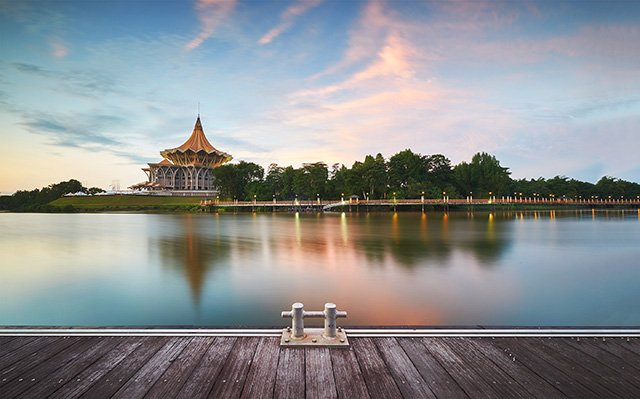
Located on the island of Borneo, Sarawak is a state in Malaysia renowned for its rich cultural heritage and extraordinary natural landscapes. This region is a melting pot of traditions and ethnicities, providing visitors with a unique glimpse into the lives of indigenous communities such as the Iban, Bidayuh, and Orang Ulu. The state’s cultural diversity is evident in its festivals, cuisines, and traditional practices, which have been preserved and celebrated since time immemorial.
Sarawak is also a haven for nature enthusiasts, offering an array of breathtaking national parks that showcase Malaysia’s natural beauty. Bako National Park, one of the oldest national parks in Sarawak, is famed for its diverse ecosystems, ranging from mangrove swamps to tropical rainforests. It is home to an array of wildlife, including the proboscis monkey, and offers a plethora of activities such as trekking, bird watching, and boat tours.
Another gem in Sarawak’s treasure trove of natural wonders is the Gunung Mulu National Park, a UNESCO World Heritage Site. This park is known for its stunning limestone karst formations, vast cave networks, and pristine rainforests. Highlights include the world’s largest cave chamber, Sarawak Chamber, and the iconic Pinnacles. Explorers can embark on challenging treks through the dense jungle or take guided tours to uncover the park’s hidden depths and geological marvels.
A visit to Sarawak also provides the opportunity to engage with indigenous communities and experience their way of life. Villages such as those longhouses along the Batang Ai River allow visitors to witness traditional ceremonies, taste local delicacies, and even partake in customary dances. These interactions offer a deeper understanding of Sarawak’s cultural diversity and the symbiotic relationship between its people and the natural environment.
Sarawak presents a harmonious blend of culture and nature, making it an essential destination for those seeking to immerse themselves in Malaysia’s multifaceted heritage. From awe-inspiring national parks to vibrant cultural encounters, Sarawak promises an enriching journey that highlights the essence of what makes Malaysia truly unique.
10. Putrajaya: Malaysia’s Modern Administrative Hub
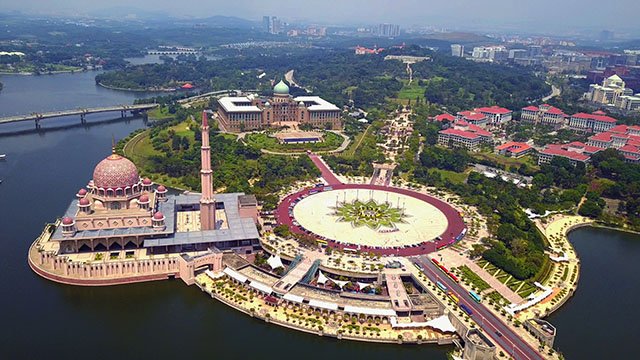
Putrajaya, a striking testament to Malaysia’s forward-thinking urban planning, offers a unique glimpse into the country’s modernity and administrative efficiency. As the federal administrative center, the city stands out with its meticulously planned architecture and verdant landscaped parks, creating an urban oasis that blends seamlessly with nature. Every facet of Putrajaya, from its buildings to the green spaces, is designed with precision, reflecting a balance of form, function, and aesthetics.
One of the most captivating features of Putrajaya is its architectural marvels. The cityscape is dominated by contemporary structures, among which the Putra Mosque is an iconic standout. With its pink granite façade and intricate detailing, the mosque is more than a place of worship; it is a symbol of modern Islamic architecture. Adjacent to the mosque lies the Putra Square, a vast open space designed for public gatherings, parades, and festivals, offering panoramic views of the surrounding landmarks.
For those passionate about urban design and planning, Putrajaya serves as an intriguing case study. The city’s layout, characterized by wide boulevards, bridges, and lush gardens, embodies modern urban planning principles aimed at enhancing the quality of life. One such example is the Putrajaya Lake, an artificial body of water that not only adds to the city’s aesthetic appeal but also serves as a recreational spot for boating and various water sports.
In addition to its architectural highlights, Putrajaya’s green spaces are noteworthy. The city’s parks, such as Taman Botani and Taman Wetlands, offer peaceful retreats amidst urban life. These areas are meticulously maintained and serve as sanctuaries for flora and fauna, providing visitors with opportunities to reconnect with nature without leaving the city boundaries.
Overall, Putrajaya represents Malaysia’s vision of a meticulously crafted urban environment that harmoniously integrates modernity with nature. It is a must-visit for anyone interested in the intricacies of urban planning, contemporary architecture, and the seamless blending of the natural and built environments.
11. Perhentian Islands: Diver’s Paradise
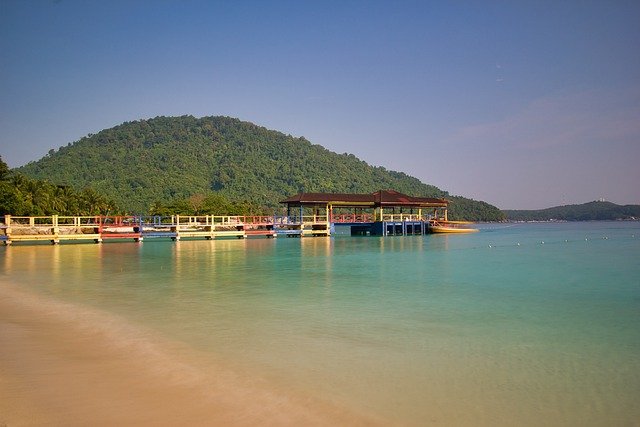
Located off the northeast coast of Malaysia, the Perhentian Islands offer an unparalleled experience for diving enthusiasts and nature lovers alike. These islands, comprising Perhentian Besar and Perhentian Kecil, are celebrated for their crystal-clear waters teeming with vibrant coral reefs and diverse marine life. Renowned as a diver’s paradise, the Perhentian Islands make an ideal destination for both novice divers and seasoned underwater adventurers.
Exploration beneath the waves reveals an ecosystem rich with colorful corals, fascinating rock formations, and a plethora of marine creatures, including turtles, sharks, and a multitude of tropical fish. Dive sites such as Tokong Laut (Temple of the Sea) and Sugar Wreck are particularly noted for their breathtaking underwater scenery and biodiversity. For those who prefer to stay above the water, snorkeling is just as rewarding, with opportunities to swim alongside turtles and rays in the shallow reefs close to shore.
Conservation is a significant focus on the Perhentian Islands, with numerous local and international initiatives aimed at preserving the delicate marine ecosystem. These efforts include coral reef restoration projects, marine wildlife protection programs, and educational campaigns to promote sustainable tourism practices among visitors. Notably, the islands participate in the Perhentian Turtle Conservation Project, which plays a pivotal role in safeguarding the nesting sites of endangered sea turtles.
Apart from its underwater allure, the Perhentian Islands also offer idyllic beaches and serene environments perfect for a tranquil getaway. The soothing sounds of the ocean, combined with the lush tropical landscapes, create a peaceful haven for relaxation. Whether lounging on the soft sandy beaches, hiking through the verdant jungle trails, or enjoying a beachfront barbecue, visitors can immerse themselves in the natural beauty and calm atmosphere that these islands provide.
Ultimately, the Perhentian Islands stand out as a top destination in Malaysia, blending natural splendor with efforts towards sustainability, making it a place not only of adventure but also of conservation and tranquility. Embrace the opportunity to explore this diving gem and contribute to the preservation of its pristine environment.
12. Niah Caves: Archaeological Significance and Traditions
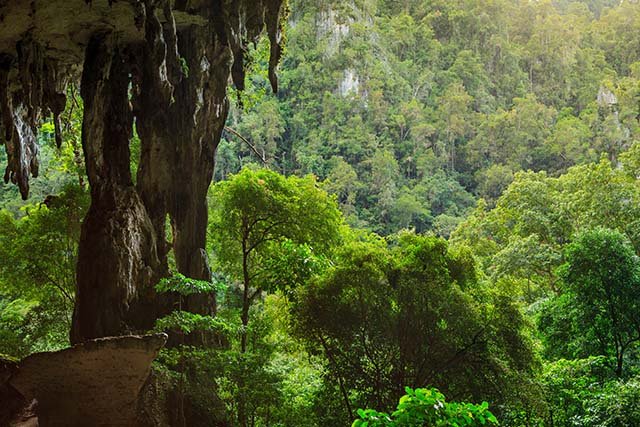
Located in Sarawak, the Niah Caves stand as a testament to Malaysia’s rich historical tapestry and cultural heritage. This intricate complex of limestone caves has garnered global attention due to its profound archaeological significance. Evidence of human activity dating back over 40,000 years has been unearthed here, making it one of Southeast Asia’s most important prehistorical sites. Among the notable discoveries are ancient human remains, including the famous “Deep Skull,” which provides invaluable insights into early human life and migration patterns in the region.
These caves also house numerous ancient cave paintings that depict scenes of early human life. These mural artworks serve as an enduring legacy of the primitive inhabitants’ ways of life, ceremonial functions, and communal activities. The paintings are remarkably well-preserved due to the protective conditions inside the cave, offering a vivid glimpse into the creativity and belief systems of our ancestors.
Beyond its historical and archaeological allure, Niah Caves are also famous for the traditional practice of bird’s nest harvesting. This age-old activity, passed down through generations, involves the collection of swiftlet nests, which are considered a delicacy and a valuable commodity. Harvesters often scale great heights within the caves using ropes and bamboo poles to reach the nests, showcasing impressive skill and courage. The sustainable methods of nest collection, coupled with the community’s deep respect for nature, exemplify a harmonious coexistence with the environment.
Visitors to the Niah Caves can embark on a journey that transcends time, from exploring ancient human origins to witnessing living traditions that have withstood the test of centuries. The sight of these monumental caves, coupled with their historical and cultural treasures, offers a profound experience that is both educational and spiritually enriching. For those seeking to delve into Malaysia’s diverse cultural and natural heritage, the Niah Caves present an unmatched destination that bridges the ancient past with the enduring practices of the present.
Malaysia is a country that offers a unique blend of cultures, cuisines, and natural wonders. From the bustling city of Kuala Lumpur with its iconic skyscrapers and vibrant street food scene, to the tranquil beaches of Langkawi and the lush rainforests of Borneo, Malaysia has something for everyone. Whether you’re interested in exploring the country’s rich history and cultural heritage, or immersing yourself in the stunning natural beauty of its forests and beaches, Malaysia is a destination that won’t disappoint. With friendly locals, a relaxed atmosphere, and a wealth of cultural and natural attractions, Malaysia is the perfect place for an unforgettable getaway. So, if you’re planning a trip to Malaysia, be sure to include some of these incredible places in your itinerary. You won’t be disappointed!






